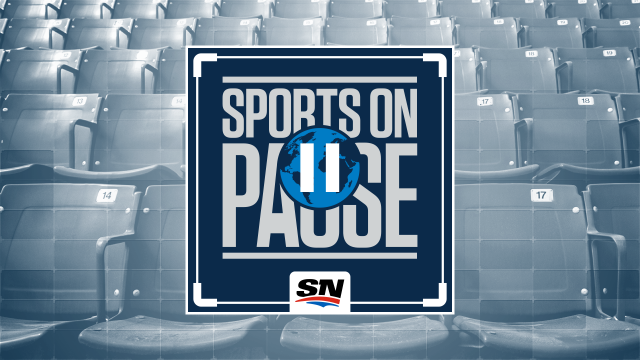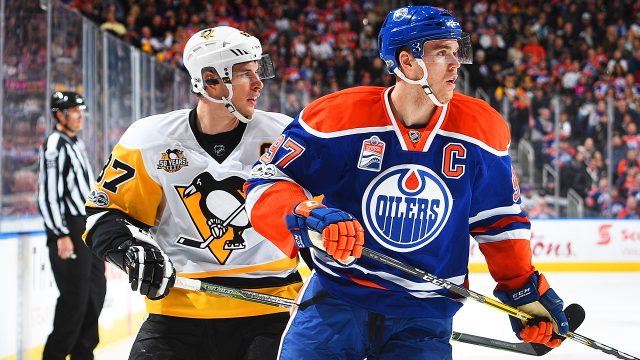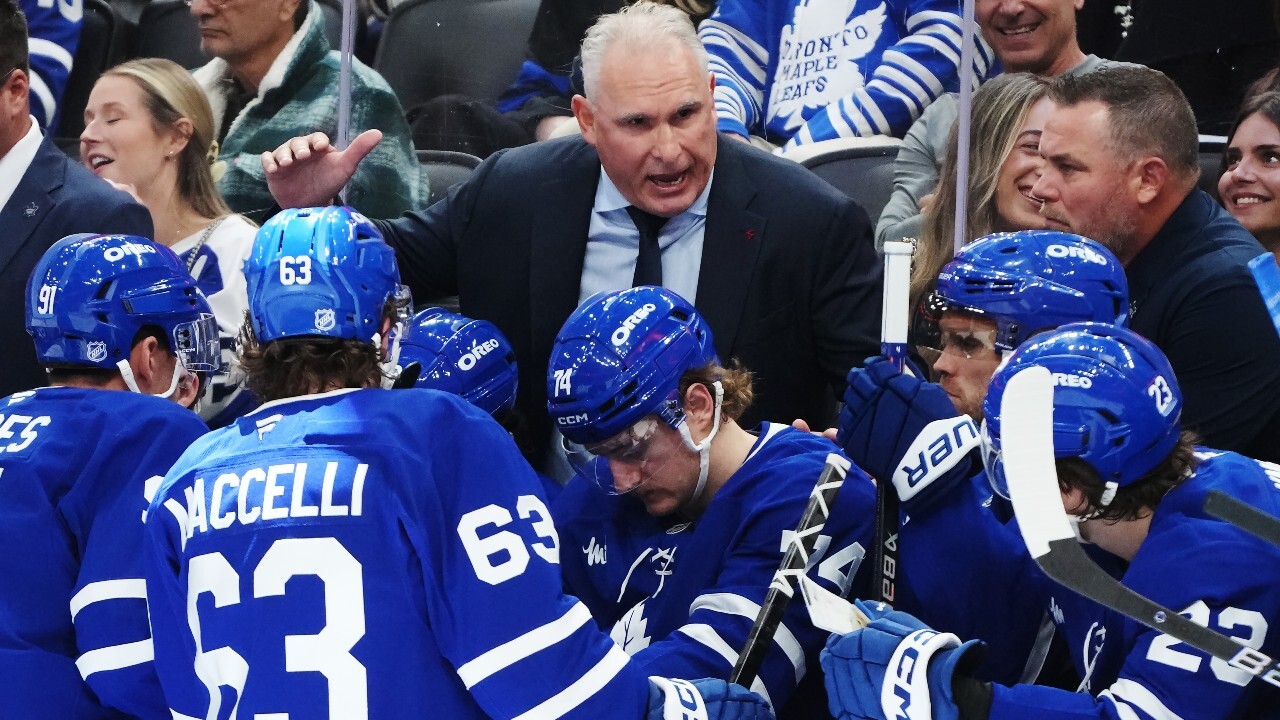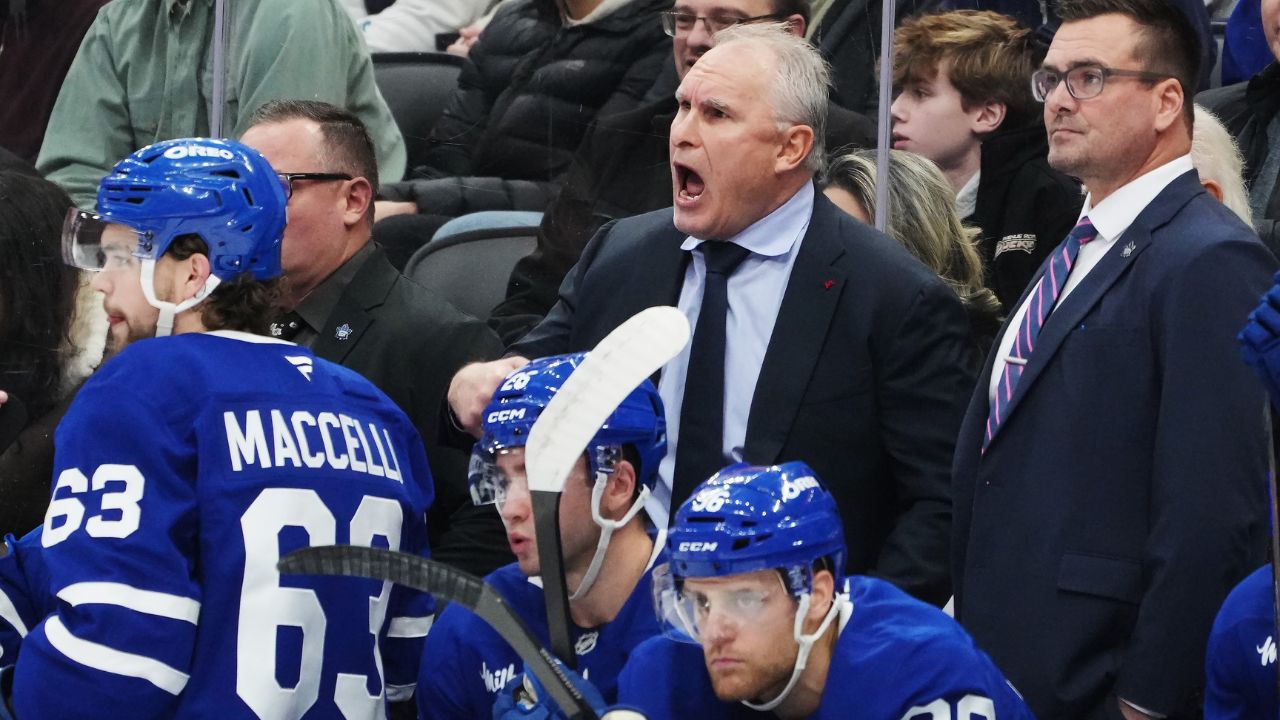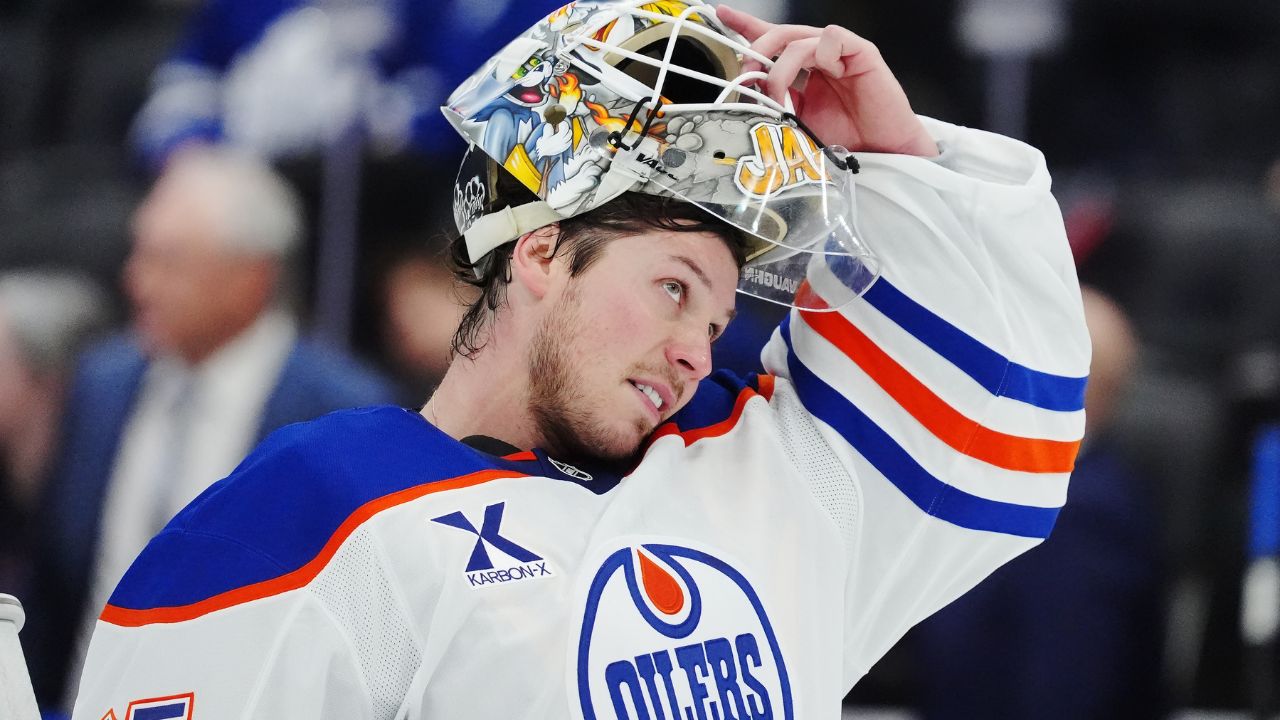
Each week, Justin Bourne’s column will cover three different topics in varying depths. Think of it as a three-course meal with an appetizer, main course, and dessert…
Appetizer: The greatest jersey never seen
Some of Sportsnet’s analysts recently took part in a combined IG story, with everyone sharing what they believed was the coolest jersey in sports. It could be a team’s look in general, or a very specific jersey. Mine was an easy choice, but it also made me want to send out a search party. I didn’t really get to flesh that story out in 15 seconds, so here’s one of those weird stories that happens when you’re the son of an NHLer:
In 1988 my dad was a member of the Los Angeles Kings and they had a game against the Calgary Flames. The Flames had the best record in the NHL that season, replete with tons of big names. Mike Vernon, Lanny MacDonald, Theo Fleury, I mean, it was truly an amazing team. So, before the game, my Dad arranged for my brother and I to go into the Flames room and get some autographs. (It was a different time, it occurs to me. I have a lot of memories of being in the dressing room pre-game in the late-’80s).
I was about five at the time, and my older brother Jeff was about eight. Jeff’s in a wheelchair, but I was just old enough to push him around. So off we went into the Flames’ room before the game, wearing yellow and purple Kings jerseys, to get the autographs of some NHL greats on some random paraphernalia someone grabbed for us.
Before we left, some guy on the Flames – I have no idea who to this day – told us to “hold on” and wrote something on my brother’s jersey with a black marker. I have no idea what; surely we thought it was just an autograph with good tidings. Off we went, back to the Kings room to show our Dad we’d accomplished our goal. Only, someone took note of my brother’s sweater, and soon a few guys came over to read what was written. The impromptu tribunal came to a conclusion, and someone decided to write back on the same jersey, then sent us on a return trip to the Flames room.
And so the Flames responded, then the Kings responded again, and so on, until my brother’s Kings jersey became what I can only believe to be essentially a trash talk message board on wheels before the puck dropped. It was as much black as yellow by the end.
My memory is obviously dicey on the details here, but that this happened has been corroborated by my brother and father, only there’s one issue: My Dad doesn’t know what happened with that jersey, and lord knows I don’t have it. I’d say there’s a 50 per cent chance someone set fire to it. I can’t tell you how much I’d pay to read those messages, which I presume were calligraphic works of eloquence on the larger political issues of the day.
Or, maybe they were the scribbles of immature dudes making cup size jokes to one another, who knows? I have a hunch which is closer to reality, but either way, I’d pay a lot of money to recover that beautiful, desecrated sweater.
Main course: How do you work on your game during a pandemic?
One of Sheldon Keefe’s strengths as a coach is his ability to spread focus between what the team is doing (meaning the bigger structure they’re presenting as a group), and what individuals are doing within that (in terms of effort and performance). There’s been an evolution in hockey coaching over the years, from primarily motivating individual people to a bigger focus on strategy, but he doesn’t really prioritize one over the other.
Focus too much on one while ignoring the other and you’ll inevitably start to fall behind in some meaningful way.
A new twist to that dynamic is the idea of not just motivating your individuals, but tangibly improving them in-season. Motivated players are good, a team playing the right system in unison is great, but adding individual gains from within all that is the type of thing that can put a team over the top.
That in-season development was crucial to the Marlies successfully developing handfuls of players for the Leafs during Keefe’s years in the minors, and my understanding is he sees no reason to deviate from that program of personal improvement with the big club. This is a key philosophical overlap with Leafs GM Kyle Dubas, and part of the reason they work so well in tandem.
What I saw in the AHL was Keefe put time into identifying areas where players could improve (as all coaches do), but also in trying to exploit strengths players already had. Contrary to common thinking, it’s not always about working on weaknesses.
A great example is Travis Dermott, who was tasked with working on his pivots to retrieve dumped-in pucks. He was already pretty good at it, but feeding that strength could turn it into a weapon few possessed, which ended up allowing Dermott to crack the NHL as quickly as he did. He worked hard on pulling in his elbow and opening his hips so that his first stride skating forward was one with some thrust behind it, which is difficult for even good professional skaters (when perfectly executed there’s almost no hitch from the backward to forward stride, or maybe just a short delay).
Along the same vein, William Nylander spent time becoming more effective picking up pucks off the wall in the open corner of the offensive zone, Kasperi Kapanen spent time incorporating changes of speeds/delays into his speed game, and countless already-good skaters spent time working on their strides with Barb Underhill.
Knowing all this, I’ve been thinking about how the Toronto Maple Leafs would be operating during this lull. One thing I’m certain they’re not doing is just staring at the clock, waiting for hockey to come back. They’ve got the ability to take individual video clips, draw on the them, write on them, and share those directly with the players. I can tell you from experience that having the time to do good video work, and knowing the players will have the time to watch said work (which can actually be enforced through some video programs now) this is quite the window of opportunity for the video and R&D guys. I have no doubt Keefe is sorting through more information than he’s ever seen about his own team through 70 games.
One of the guys the Leafs would like to get more out of is Alexander Kerfoot. It’s not that he hasn’t been good, per se. He’s had some very good stretches. But you get the sense they know there’s more within him they haven’t yet succeeded in pulling out, part of which is no doubt due to the circumstances they’ve placed him in. He’s had three head coaches in a year (Bednar, Babcock, Keefe), he’s played on three different lines, he’s played different positions… it’s been a lot to ask a guy to deal with on top of playing in a Toronto market where you’ll face a lot of scrutiny. Even with all that he’s been fine. But again, I’m sure they think they can get more from him.
So when he came on Hockey Central this past week, I asked him about Keefe, and any individual tweaks he may have been tasked with working on. Sure enough, there was a focus:
“He’s very good at skill development and being specific about what he sees in players,” Kerfoot said. “One thing that he’s focused on with me is body positioning. I think that for smaller guys it’s probably more important than it is for bigger guys. But you see a lot of small guys who are really good at it and are able to win a ton of battles. He’s just kinda focused on that with me, where I don’t need to fully engage physically at times. If I have body position it will allow me to win more battles, and from an offensive standpoint, allow me to gain separation and make plays, whereas sometimes you don’t need to initiate contact, you just need to be in the right spot, and allow your positioning to make room for you.”
[radioclip id=4900881]Emphasis mine, simply because I recognize those as key concepts Keefe (and skills coach Darryl Belfry) would believe to be important in creating offence, a task widely accepted as the toughest thing to do in the game today.
Each player surely has some video to watch during this lull on an area they can improve (Kyle Clifford confirmed as much on the show Wednesday). Maybe it’s something they haven’t thought of before, something they haven’t had broken down for them properly in the past, or something they’ve never had the time to focus on. It’ll be interesting to see if any players are able to watch enough video to better understand an area of their game that could be improved, and actually come out of this pause better off than they went into it. Most guys won’t, but even if one or two take that stride, this won’t be considered lost time.
Dessert: The beauty of airbrushed old-school hockey cards
Speaking of the show, Wednesday featured Ken Reid, Sportsnet All-Star and hockey card aficionado. On-air he made mention of the single greatest hockey card of all time, and he wasn’t referring to the Gretzky rookie card that he co-owns with his brother. I present to you this beautiful card of the great Bill Clement, which appears to show him riding a chicken that’s wearing the opposing team’s socks:
His teammate also appears very unwell, I might add. The pants are straight out of a Batman comic book and the whole thing is amazing.
Please, check out that tweet and the responses to see more cards like this. I had no idea there used to be such artistry in the hockey card industry.


